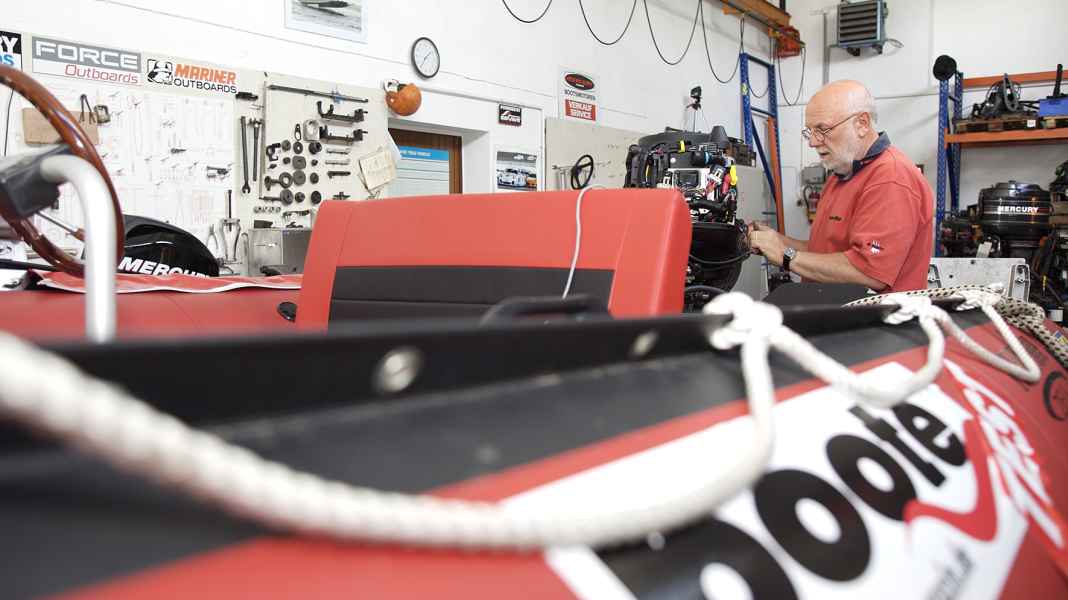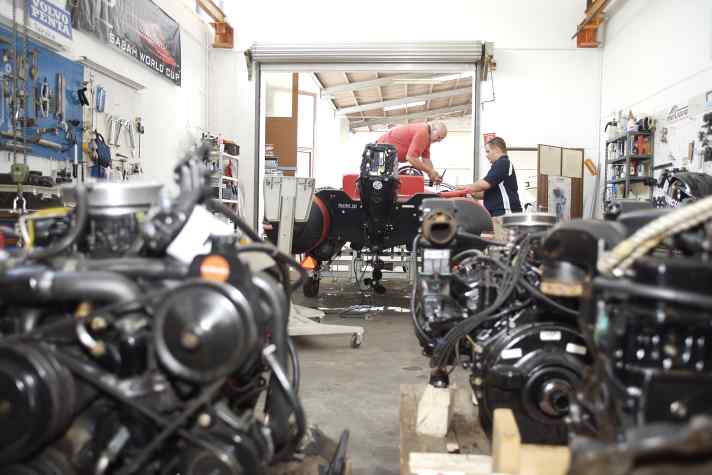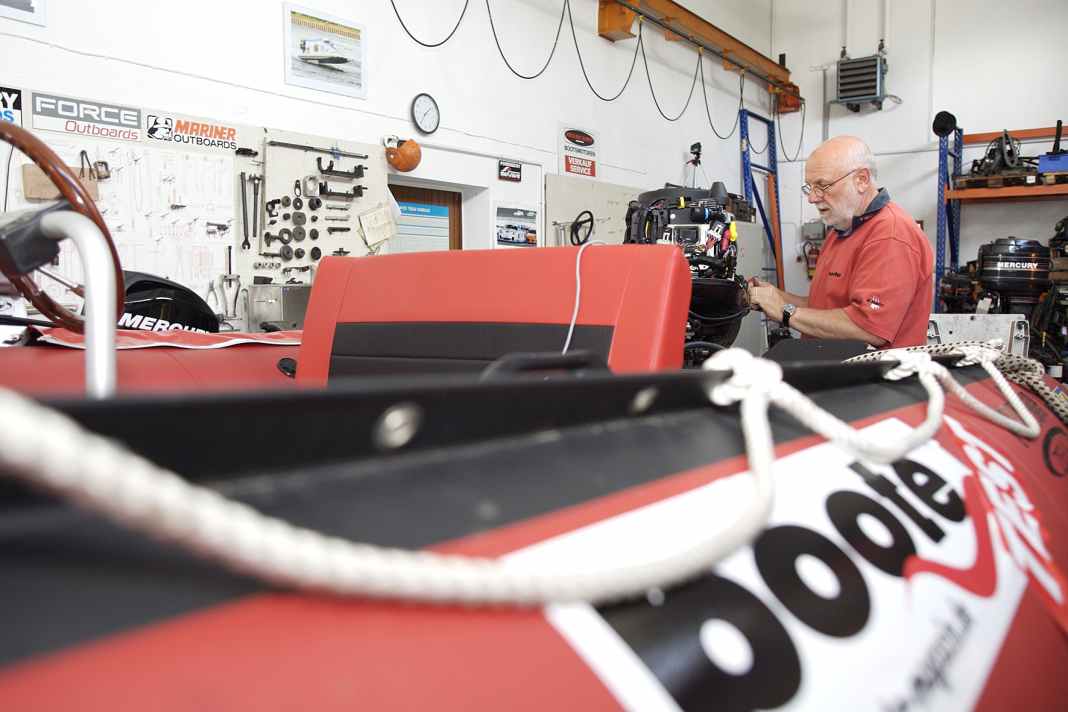

We are hiring: 50 hp outboard in long shaft version. What you need: Flexibility, operational readiness, high performance, economy, safety, ease of operation, smooth running, low weight and an acceptable price. We offer a temporary job on a Zodiac Futura MK III, a 4.50 m long and just 116 kg heavy inflatable boat with an aluminium floor, and the opportunity to work independently and with a focus on results.






Evinrude E 50, the BF 50 from Honda, Mercury's F 50, Suzuki DF 50, Tohatsu MD 50 and Yamaha's F 50 came to the "job interview" with the BOOTE testers in Kahl am Main.
So everything as usual? Not quite. Honda's BF 50, the only carburettor engine in the last test (BOOTE 4/05), has since undergone "further training" and today, like the other contenders, features electronically controlled petrol injection. Suzuki utilised the time and increased the displacement of its DF 50 from 815 to 941 cc. Only the two four-cylinder engines from Mercury and Yamaha have a little more to offer in this respect (995 and 996 cc). Bringing up the rear here is the 808 cc Honda. The fact that it "only" weighs the second best at 100 kg despite the strict displacement diet is due to the fact that two-strokes have inherent advantages in this discipline. It's just easier to live without valve control - isn't it? The 93.5 kg Tohatsu confirms the theory that two-strokes are lighter than four-strokes; Evinrude's E 50, the only two-cylinder engine in the test, does not.
The test runs with the Zodiac Futura MK III brought some surprises. Of course, an engine can only deliver its performance if it is mounted "correctly" and has the "right" propeller. And who knows better than the manufacturer what is "right" for his engine? That's why the test engines have always been assembled, tuned and run in by the manufacturer's technicians. It should be noted that, with the exception of Evinrude, all engines are started with aluminium propellers.
You can read the full test in the 1/12 issue of BOOTE
